Realizing Children’s Rights in Chad
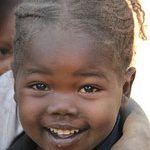

Although Chad has ratified the Convention on the Rights of the Child and the African Charter on the Rights and Welfare of the Child, implementing them has proven to be very difficult. There are many issues that children in Chad are faced with, such as lack of education, lack of access to healthcare, poverty, child labour, etc.

Children’s Rights Index: 4,64 / 10
Black level : Very serious situation
Population: 12,1 million
Pop. ages 0-14: 47.13 %
Life expectancy: 54.35 years old
Under-5 mortality rate: 209 ‰
Chad at a Glance
Chad gained independence from France in 1960 and experienced a civil war for almost 24 years involving France, Libya, and some of the Arab northern regions. Although many efforts of internal change as well as international help have improved the lives of children in Chad, many factors make Chad a country where living peacefully for children, women and men is an incredible challenge. The country has experienced and continues to experience an incredible amount of challenges very bravely, many of them involving children.
Addressing the Needs of Children [1]
Right to Education
Chad’s Interim Education Plan 2018-2020 aims to improve the quality and the results of learning, as well as to upgrade the country’s offer of education such as professional and technical levels, according to the market. Because of the national economic crisis, the country will probably extend it until 2021.
Many difficulties will be addressed because the country is dealing with many challenges, such as lack of funding, or access to academic data and information. There are also disparities between rural and urban areas. For this reason, the government established measures such as a policy of bilingual education (with French and Arabic teaching), the integration of refugee camp schools into the national education system and more.
Although education in Chad is mandatory, only some children, especially boys, pursue further education after primary school. Gender equality and equality between urban and rural areas is therefore still a problem in the country.
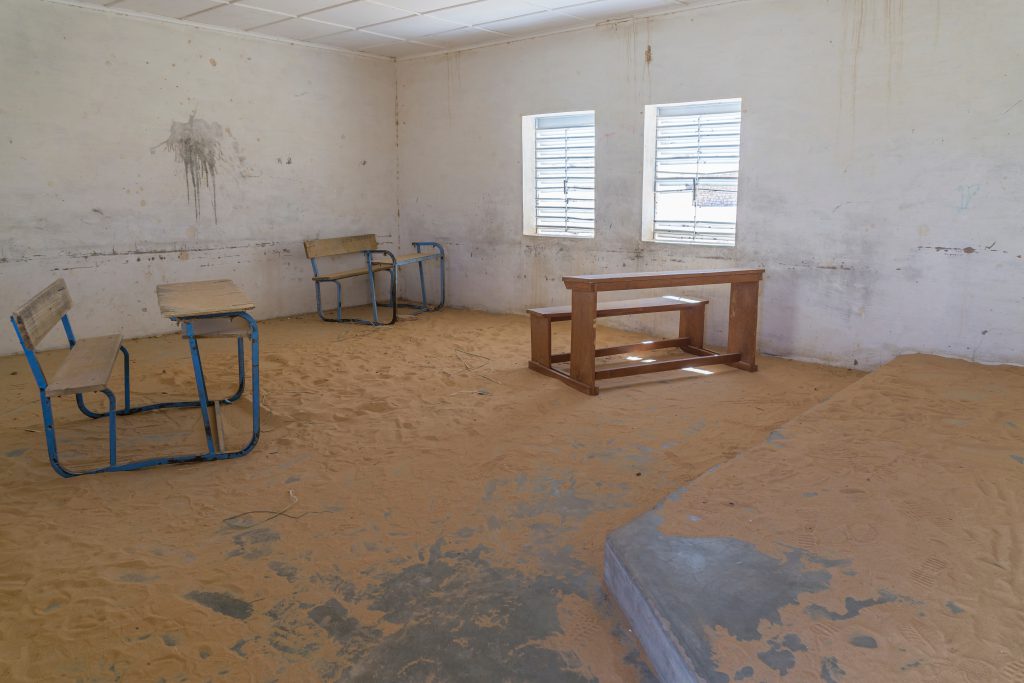
The primary school age population is 1,914,000 in a population of 12,142,00 inhabitants. With regards to barriers to education, many factors can be pointed out: poverty, rural locations, lack of resources, quality of service, low skilled teachers, teachers’ absenteeism, infrastructure and overcrowding in classrooms with an average of 64 children to 1 classroom in urban areas and an average of 100 children to 1 classroom in rural areas.
In Chad, 34,4% of children between 6 and 11 are out of school, whereas more than 800,000 children between 9 and 14 do not go to school. The gross enrolment rate varies between 95% in the south and 20% to 40% in the north.
Right to Health
The lack of access to healthcare is one of the most challenging health issues with which the people of Chad are confronted. Many children do not seek medical care or treatment due to the long distances they have to travel to get medical assistance. Unfortunately, lack of access to sanitation and healthcare also means that for every 100,000 women 1,100 die during childbirth.
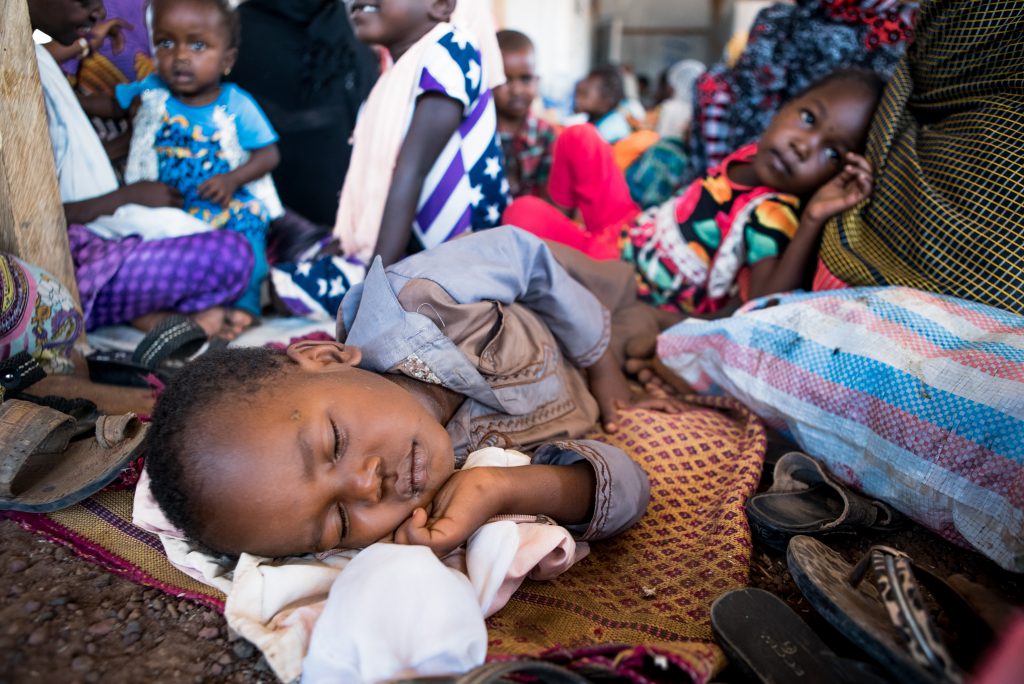
One of the reasons leading to the lack of food is also the resettlement of displaced people leading to higher rates of malnutrition. Internally displaced and refugee populations impact Chadian communities and affect local agriculture, livestock rearing and sustenance activities. All these factors shape the problem of food shortage in Chad. Apart from this, disastrous environmental conditions have depleted crop harvests, causing again foods shortages, which has been only worsened by the resettlement of displaced people.
Furthermore, the mortality rate of children under the age of five is very worrying. Due to the lack of sanitation, drinking water and healthcare in rural areas, 209 children out of 1000 die every year. Respiratory infections, particularly pneumonia, was one of the primary causes of child mortality in 2004. Moreover, diuretic illnesses have terrible consequences on children, such as dehydration, which, even if it happens only for a few hours, could cause severe consequences on the development of the child, or even death.
Risk factors → Country-specific challenges
Poverty
In Chad, 80% of the population depends on subsistence farming and raising livestock which is one of the factors that explains Chad’s fragility. In rural areas, the high level of mortality and migration of men leads to 23% of all households being headed by women.
Although poverty was reduced from 55% to 47% between 2003 and 2011, the country is still facing another financial crisis threatening its future progress. In 2016, Chad was ranked 186 out of 188 countries based on the UN Human Development Index measuring life expectancy, expected years of schooling, the Gross National Income (GNI), the Inequality-Adjusted HDI, the gender development, population, poverty, employment, human security and more. This index categorizes Chad as one of the poorest countries in the world.
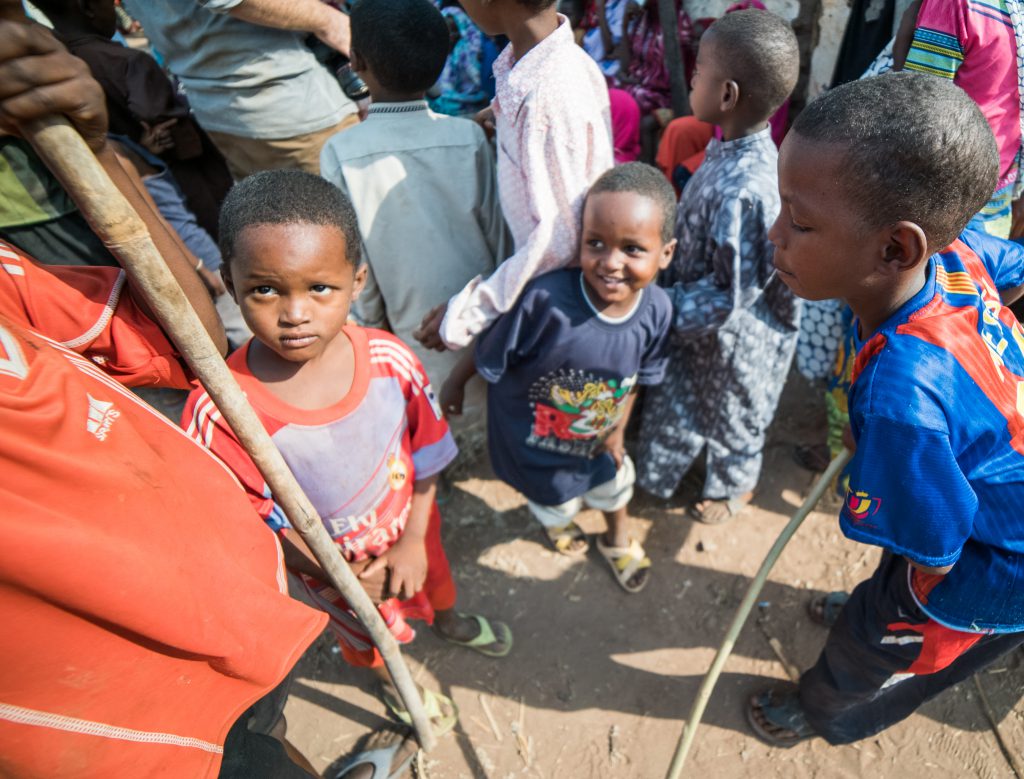
The poverty gap index, used to measure how much an average income of impoverished people falls below the poverty line, shows very big differences between rural and urban areas in Chad. For instance, while rural areas have poverty index reaching 22.6%, urban areas stand at 6.6%. Furthermore, whereas low levels of education have a concrete impact on rural poverty, the number of children per household and the effect of climate change also have consequences on the level of income and employment as Chadians’ lives are deeply affected by frequent droughts and water scarcity.
Children in Chad experience extreme situations of poverty also because most people lack amenities such as drinking water, sanitation, medical infrastructure and housing. Apart from that. there is only one medical doctor per 38, 000 inhabitants.
Child Labour
Children in Chad often experience the worst forms of child labour, in cattle herding and domestic work which can sometimes lead to human trafficking.
In 2018, it was considered that the country had made moderate advancement in efforts to eliminate the worst forms of child labour. The country sent three labour inspectors on a 45-day training at the ILO African Regional Centre for Labour Administration. It also introduced the Refugees and Host Communities Support Project to improve the access to healthcare for refugees, including children, who had been experiencing unacceptable forms of labour.
One of the main issues with child labour is that Chad’s legal framework does not include criminal penalties for the use of children in illicit activities. Also, the government does not yet collect data on law enforcement efforts and has not been proactive in developing policies to deal with child labour accordingly.
In Chad, the minimum age for employment is 14 years. However, due to economic difficulties, many families are often forced to let their children work. Seeing that the children do not receive appropriate education, they work in very harsh conditions – long hours, low pay, no food, etc. In addition, they incur the risks associated with prostitution, discrimination, abuse, etc.
Child Abuse and Exploitation
Some children are often subjected to violence within their own family. However, this is allowed according to Chadian tradition. In addition, children are often abused at school, during detention and on the streets. Unfortunately, violence is very common in Chad, and children are often the victims. Girls are the main victims of rape and other kind of sexual violence. During conflicts, armed groups and community members are the main perpetrators of such violence.
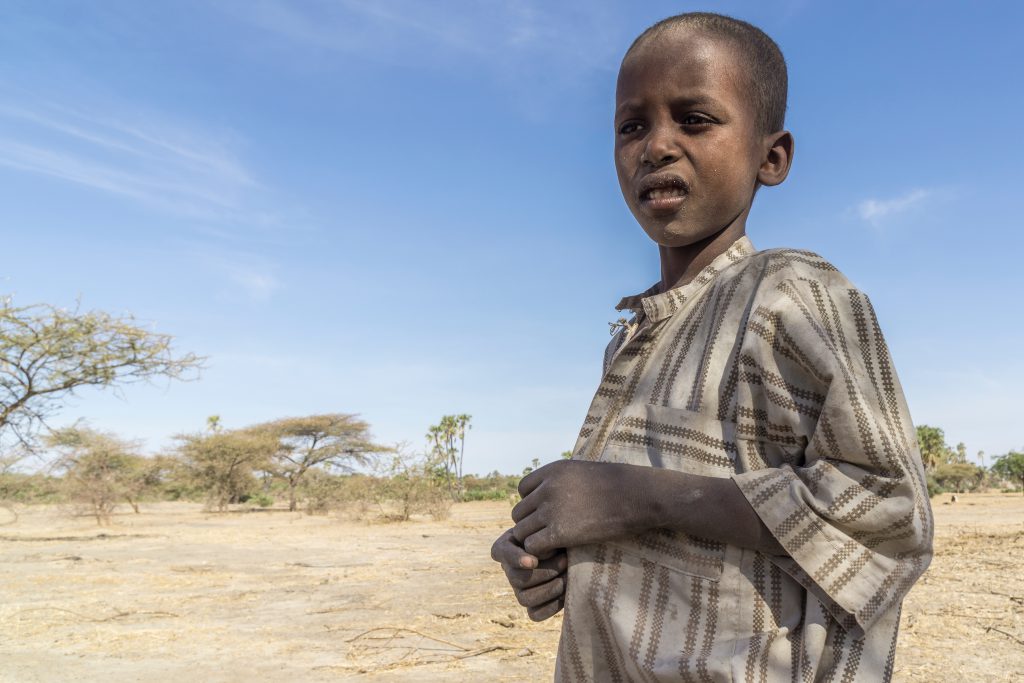
The government is unable to protect or, according to some sources, unwilling to protect children from such abuse. The 2008 report by Ban Ki-moon, dealing with this topic, highlighted attacks on schools and abductions of children by armed groups. In March 2018, Chad’s government ratified an ordinance prohibiting human trafficking. The recruitment of children and adolescents, mostly by armed groups and militia, is common, also due to the internal displacement of families.
In 2009, there was a conflict between the government forces and rebel groups where both sides used child soldiers, leading to serious violence against children – rape, mistreatment and murder.
The Articles 335 and 336 of the Penal Law criminalize the exploitation of children through prostitution and prescribe penalties of two to five years imprisonment and a 100,000 to 2 million CFA fine (180 to 3,520 dollars). The National Assembly has reviewed the revisions of the Child Protection Code, Labour Code, Family Code as it contains now additional provisions which criminalize child trafficking and increase protection of children working in the informal sector.
Child trafficking and exploitation is very common in Chad. It is primarily internal, meaning that it often starts with children being entrusted to relatives or intermediaries in return for promises that can involve education, goods, money and more. Some of these children are forced to work in urban areas, in agriculture or in gold mining in the north of the country. Other forms of forced labour which are practiced are begging and street vending.
Child Marriages
Chad committed to eliminate child, early and forced marriage by 2030 according to the goal 5.3 of the Sustainable Development Goals. The country has also proactively adopted the co-sponsored 2015 Human Rights Council Resolution as well as the 2013 UN General Assembly Resolution on child marriage. Additionally, many other actions are being tried.
Despite these efforts, the marriage of young girls is still a common practice in Chad, as the age of majority is set differently within various documents. From a legal point of view, civil majority is reached at 21 years and the legal age of marriage is set at 15 years for girls and 18 years for boys. However in customary law, the age of marriage is implicitly set at 13 years, which goes against the International Convention on the Rights of the Child.
Child marriages have a negative impact on the health, development and rights of a child. Girls who are married early are limited in their social interactions as they drop out of school. They risk early pregnancy, which can be dangerous for both them and their child.
In 2017, UNICEF reported the number of married children at 30% by the age of 15 and 67% by the age of 18. According to UNICEF, Chad has the third highest prevalence rate of child marriage in the world. It is more common is the regions of Guéra, Lac, Chari Baguirmi, Sila and Mayo Kebbi Est.
The main reason given to this high rate of marriage is displacement seeing that rape is quite common in refugee camps on the border with Sudan. Custom norms can oblige girls to marry their attackers to preserve their honour. In general, the higher the education level, the later the marriage occurs.
Religions such as Catholic, Protestant, Animist and Muslim are also at the centre of child marriage. Religious practices sometimes lead to Female Genital Mutilation and Cutting (FGM/C), which is experienced by 44% of women aged between 15 and 49 years old, and polygamy where girls are married as third or fourth wives.
Street Children
The number of Chadian children that wander and live on the streets is constantly increasing and this is mainly due to the very unstable financial situation in Chad. Their rights to accommodation, health, education and nutrition are not fulfilled.
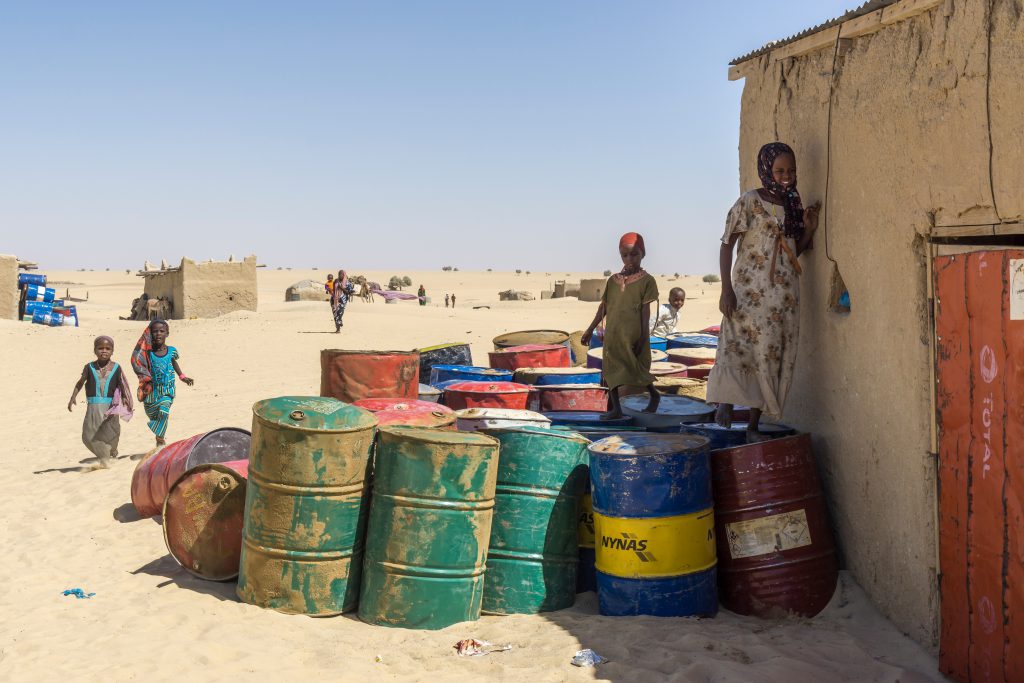
Street children in Chad often live in groups of 10 to 25 children. Because of the dramatic emotional experience coming from sleeping and living on the street, these children often turn to the use of drugs. In addition, because of the environment of unsanitary areas, children cannot occupy public spaces very safely and they can face many risks such as economic and sexual exploitation, health problems etc. Moreover, street children have no chance of finding the stability to access education which could enable them to permanently leave the streets.
Written by Adrian Lakrichi
Last updated on 1 May 2020
References:
Borgen Magazine, Social and Political Causes of Poverty in Chad¸ (2017), accessed on 14/03/2020.
SOS Children’s Villages International, General information on Chad, (2019), accessed on 14/03/2020.
UNICEF, Chad Humanitarian Situation Report No. 11, (2019), accessed on 14/03/2020.
RefWorld, 2018 Trafficking in Persons Report – Chad (2019), accessed on 14/03/2020.
UNESCO, Impact of conflict on children’s health and disability, (2010), accessed on 14/03/2020.
Partenariat Mondial pour l’éducation, L’Education au Chad, (2012), accessed on 14/03/2020.
Wathi, La situation de l’éducation au Tchadhttps, (2016), accessed on 14/03/2020.
Girls Not Brides, Chad, (2018), accessed on 14/03/2020.
[1] This article by no means purports to give a full or representative account of children’s rights in Chad: indeed, one of the many challenges is the scant updated information on Chad children, much of which is unreliable, not representative, outdated or simply non-existent.

